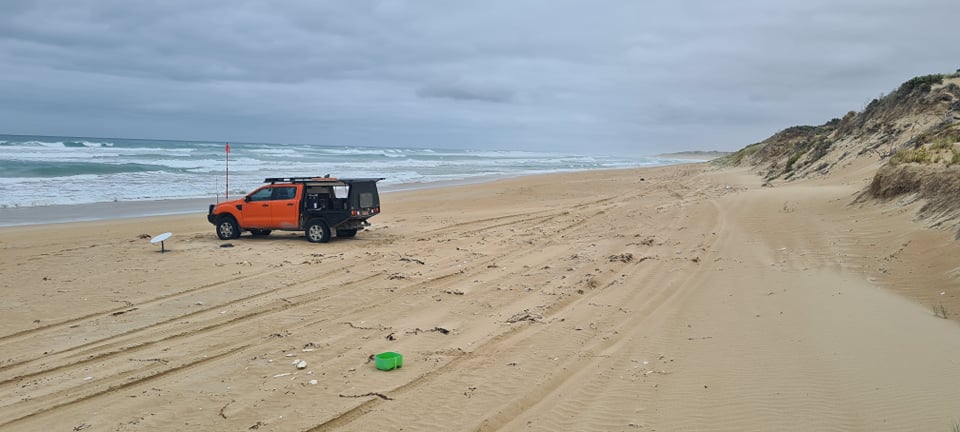
What I’d like Starlink to change for travel/mobile/4×4/overland/RV use
Starlink is amazing, but it’s not yet designed for mobile use although we understand that’s planned. Despite Starlink’s single-location focus, myself and many others are using it as we travel. Here’s what I’d like to change to make Starlink properly travel-friendly. The list is in no particular order:
- Smaller and lighter Dishy – I’m using the original circular dish, and I’d like the newer, smaller, rectangular version available in the USA. Smaller the better of course, but naturally there’s a limit to how small it can be made.
- Carrybag – a bag or case to put everything in.
- 12v power – so no need for an inverter (uses around 30% less power, see link below)
- Detachable cable from dish – possible now with the smaller rectangular dishes
- Legs fold up on dish stand – make it easier to store. And telescopic pole, although wind resistance will limit height.
- Caravan drawbar/tow hitch/bullar pole and mount for Dishy. This is typically what the aftermarket would come up with.
- Chainable – ability to run a bike lock or something through Dishy to deter thieves
- Stand for the wifi access point
- Weatherproof wifi access point, or case for it.
- USB port in the control box, because you can never have too many of those for charging things.
- Sleep modes; so you can say shut down from maybe 22:30, wake up again at 05:00. Or a timeout if no activity, say you’ve gone hiking for the day. I’m not sure if this would save any significant amount of power though.
- Ability to shift your account from hardware to hardware; so if I’ve bought extra hardware to perma-mount at home, I can use the same account on the road. I know people run two Starlink accounts for this purpose, but I’m cheap 🙂
- Combined control box and wifi. I’m a bit torn on this, can see pros and cons.
- RJ45 connector protectors to relieve strain on them, and on Dishy, any force is taken by the cable not the connector itself. I see accidents happening.
- Reflective markings for Dishy so it’s more visible in the dark.
- LCD readout of voltage, current draw, maybe status on the control box.
- Service address – ideally, the need to change service address would go away. But if it can’t yet, then how about; you take Starlink to wherever you want, and connect. If there’s no space in the cell it’ll tell you, and all you can do is use Starlink.com at reduced speed.
- Guest network on the wifi router so you can share your connection with others, relatively safely. Ideally, unique username/password per guest.
- Better diagnostic lights – they’re a bit rubbish at the moment. What we need nice bright sunlight-readable ones so you can glance at the unit and see how far along the chain you’ve got:
- control box has power
- Dishy has power and can be controlled
- mechanical problem with dishy
- everything working fine but searching
- Internet connected (maybe 3 LEDs for weak, medium, strong signals) – bright green LED when it’s connected, so you can tell at a glance the status.
With that lot you could see for example that the system has power, got an Internet signal, but there’s a mechanical problem with dishy. Or that it’s got power everywhere, connected to satellites, but the signal is weak (obstructions probably).
Some of the above is quite easy to DIY such as the reflective markers, and some of the more complex stuff has already been done, for example clever people have made a 12v supply for Starlink. And the aftermarket will, once demand is there, come in with things like cases and travel poles. You can also swap out the standard wifi access point for a different one.
Anyway I think that’s it, what’s your view?
Starlink for travellers is explained below:
And here’s further testing:


